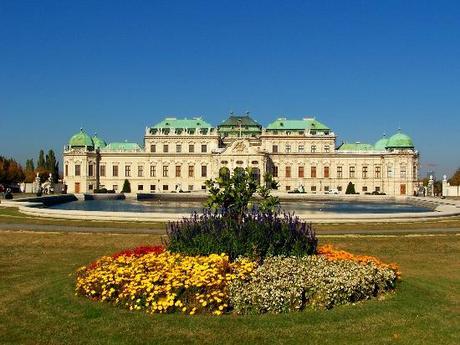Belweder Palace
Belweder - a small palace built at the end of the XVII century, rebuilt for the Russian Prince Konstanty governing what was left of Poland at the time, in 1818 by an architect Jakub Kubicki. Classicist palace like a Palladio´s villa, with an old and beautiful park below. Since 1918 residence of the President of Poland. Closed to the public, but you may see the palace from the outside, as well as visit the park and see the reflection of Belweder in the lake behind it.
First a summer mansion of the king, then the seat of the occupants, of Marshal Piłsudski, and finally of the presidents of Poland. The 500-year long history of Belweder is a story of the hard journey of the Polish people to their independence.
The history of Belweder dates back almost 500 years. In the 1st half of the 16th century, a mansion of queen Bona was probably situated in the Warsaw Escarpment area, in the place where the Belweder Palace is currently located. The next owner of the area, Krzysztof Zygmunt Pac, the Chancellor of the Grand Duchy of Lithuania, converted the old building or erected a new one in the same place.
Belweder (from the Italian bello and vedere — "beautiful" and "to see") is a palace in Warsaw, a few kilometers south of the Royal Castle. The President of the Republic of Poland, Bronisław Komorowski, presently resides at Belweder. The present building is the latest of several that stood on the site since 1660. Belweder once belonged to Poland's last king, Stanisław August Poniatowski, who used it as a porcelain-manufacturing plant. From 1818 it was the residence of Russian Grand Duke Constantine, who fled it at the beginning of the November 1830 Uprising. Up to the outbreak of World War I both Belweder and the Łazienki Park remained under the administration of Russian tsars. After the Russians had retreated from Warsaw, in 1914-1918, the Palace functioned as the main seat of German General Governor Hans von Beseler. Afterwards, up to 1926 the Palace served as the seat of the Presidents of the Republic of Poland – of Gabriel Narutowicz and Stanisław Wojciechowski.
After the re-establishment of Poland's independence following World War I, it was (with a hiatus, 1922-26) the residence of Marshal Józef Piłsudski, Chief of State (1918–22) and later (1926-35) Minister of Military Affairs of Poland, who died there in 1935. (During the May 1926 coup d'état, President Stanisław Wojciechowski had abandoned it ahead of Piłsudski's advancing forces.) Later, in years 1935-1939, a museum dedicated to the Marshal was located in the Palace
During World War II, the building was extensively remodeled for Ludwig Fischer, Governor of occupied Warsaw in the "General Government" of Poland.
In 1945-1952 it was the residence of Bolesław Bierut, and later of the president of the Council of State. From 1989 to July 1994, it was the official residence of Poland's president, but proved too small for that purpose.
Protection of the Belweder Palace by the Government Protection Bureau (Biuro Ochrony Rządu, abbreviated BOR) was difficult, as the palace is located on a hill that shares a fence with the popular Łazienki Park, located below, a major tourist attraction. For security reasons, the park has had to be partly closed during visits by foreign heads of state to the Belweder. Due to the size of Łazienki Park, this has proven difficult and time-consuming, and the Polish press has mocked Secret Service agents checking the bushes and disturbing the Park's peacocks.
Belweder is normally used by the President and the government for ceremonial purposes, while the President resides at the "Presidential Palace" in the city center. It also serves as an official residence for heads of state on official visits to Poland and other important guests. There have been plans to turn the Belweder Palace into a museum dedicated to Józef Piłsudski. Currently it houses a small exhibition devoted to the Marshal. However, the current president of Poland, Bronisław Komorowski, has chosen to make Belweder his official residence.




